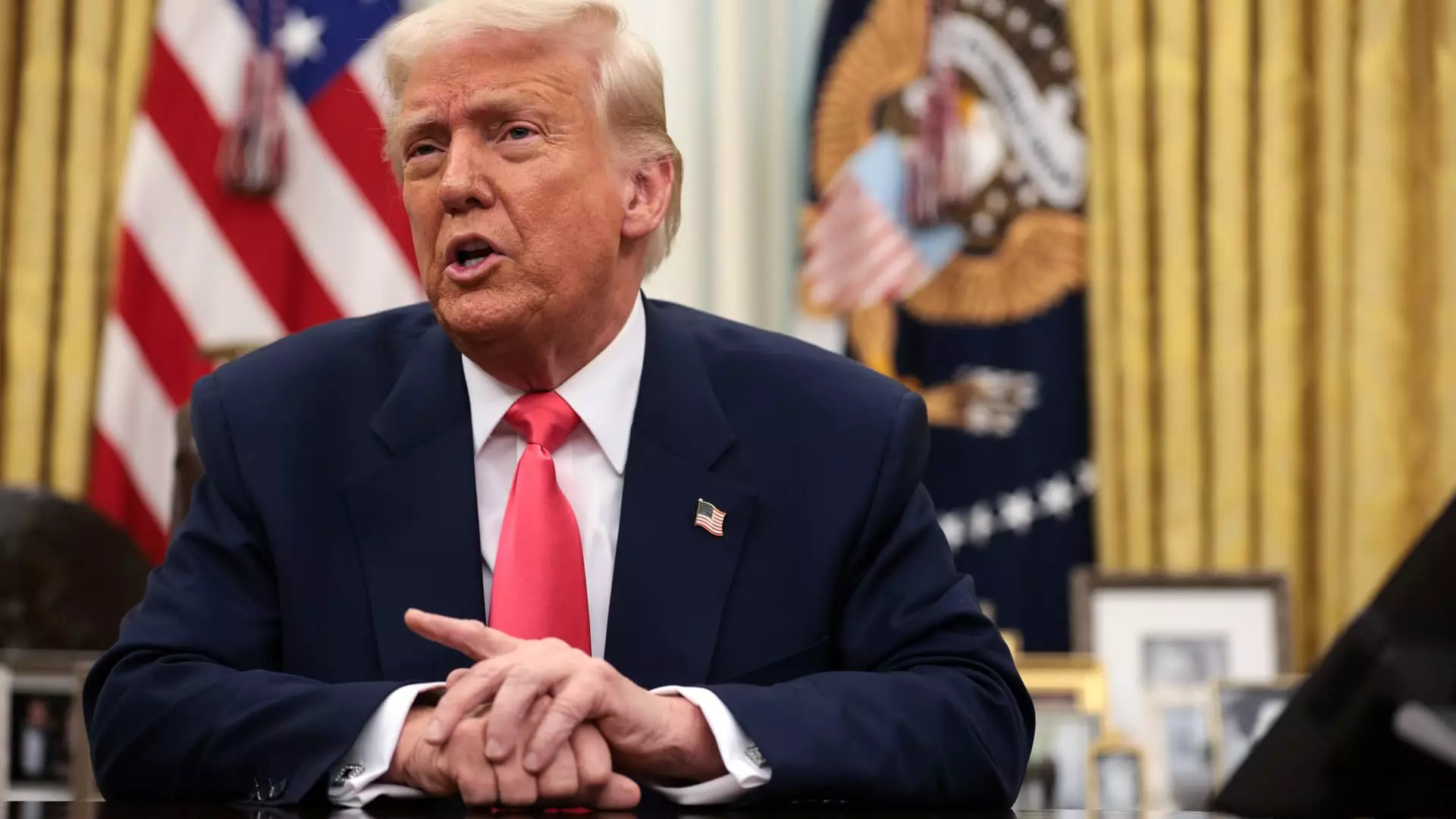When President Donald Trump proclaims that tariffs will usher in a new era of American prosperity, it’s essential to scrutinize this assertion. The government’s projections, particularly from trade adviser Peter Navarro, claim tariffs could raise a staggering $600 billion annually, and even more when auto tariffs are considered. However, a deeper dive into the economic implications reveals that these figures are not only overly optimistic but fundamentally disconnected from reality. Do we really expect tariffs to flip the economic scales in such a remarkable manner?
According to numerous economists, the revenue forecasts stemming from the Trump administration’s tariffs are grossly inflated. In fact, estimates suggest that the actual revenue could be, at best, half of what is being touted. This miscalculation could lead to significant repercussions—not only for the economy but also for federal debt and the forthcoming tax-cut agenda. A sound understanding of the economic intricacies requires abandoning the surface-level allure of tariff wealth and engaging with the underlying fiscal mechanics at play.
High Costs of Tariffs on the Average Consumer
The reality of tariffs is their tendency to raise prices for consumers significantly. The suggestion of a 20% tariff on most imports could cost average American households upwards of $4,200 annually. This is not merely an inconvenience; it can reshape consumer behavior in profound ways. With essential goods more expensive, families are pushed to limit their spending on imports, thereby exacerbating potential revenue losses from diminished buying power.
Economists have warned about the cascading economic effects triggered by such policies. A broad-based tariff might result in diminished growth, hiring freezes, or layoffs within domestic companies as they struggle to pass on costs without risking consumer alienation. The anticipated fallout is a classic example of an economic policy designed to boost domestic production while inadvertently throttling consumer spending—a counterproductive cycle that may lead to recession rather than recovery.
The Ripple Effect: International Repercussions
A key oversight in the administration’s approach is the likelihood of retaliatory tariffs from foreign nations. Countries affected by U.S. tariffs are poised to respond in kind, potentially leading to a tit-for-tat trade war that could decimate U.S. exports. The interconnectivity of the global supply chain means that U.S. companies facing tariffs will inevitably suffer from reduced foreign demand and heightened scrutiny abroad.
Such dynamics raise pressing questions: Does the administration genuinely anticipate that harming foreign economies will benefit the United States? When foreign nations enact tariffs against U.S. goods, they are targeting American workers, farmers, and manufacturers—an outcome that could negate any perceived benefits from initial tariff revenue. Economic growth depends not solely on domestic production but also on maintaining robust international trading relationships. Trump’s proposed policies risk undermining those very pillars.
Short-Term Gains Versus Long-Term Consequences
Any discussion surrounding tariffs must grapple with their temporary nature. Economists predict that such measures may lack durability under the weight of both domestic and international pressures. Financial forecasts that expect tariffs to sustain over a decade seem unrealistic. If history is any teacher, shifts in government leadership can lead to abrupt policy changes, rendering the projected revenue hollow at best.
Furthermore, significant amounts of tariff revenue may become diverted into relief packages or bailouts for parties adversely affected—similar to past actions taken by the Trump administration in response to farmers facing retaliatory tariffs. Thus, instead of bolstering the economy, these tariffs risk creating a fiscal loop where revenues are funneled back into managing the consequences of the tariffs themselves. In the long run, this trend could spell disaster for an already burdened national debt.
The Dilemma of Tax Cuts and Debt Ceiling
Lastly, underpinning Trump’s tariff narrative lies a critical contradiction: the relationship between proposed tax cuts and tariff revenues. The administration has signaled that the revenue generated will play a crucial role in financing the extension of tax cuts initiated in 2017. However, given the unsteady forecasts of actual tariff returns, this approach teeters on a precarious ledge.
Is it wise to gamble the nation’s financial future on the uncertain promise of tariff revenue? Without reliable income from tariffs, the burden falls on Republican lawmakers to either fund the tax cuts through spending cuts elsewhere or risk inflating the national debt further. This dilemma paints a grim picture, highlighting the inconsistency in leveraging tariffs as a primary source of funding for tax reforms.
By critically evaluating the administration’s tariffs, we unravel an economically dubious narrative wrapped in the allure of wealth generation and patriotic fervor. The complexity of today’s economic landscape demands a more nuanced approach—one that acknowledges the realities of a globalized economy and the myriad factors influencing domestic growth beyond mere tariffs.

